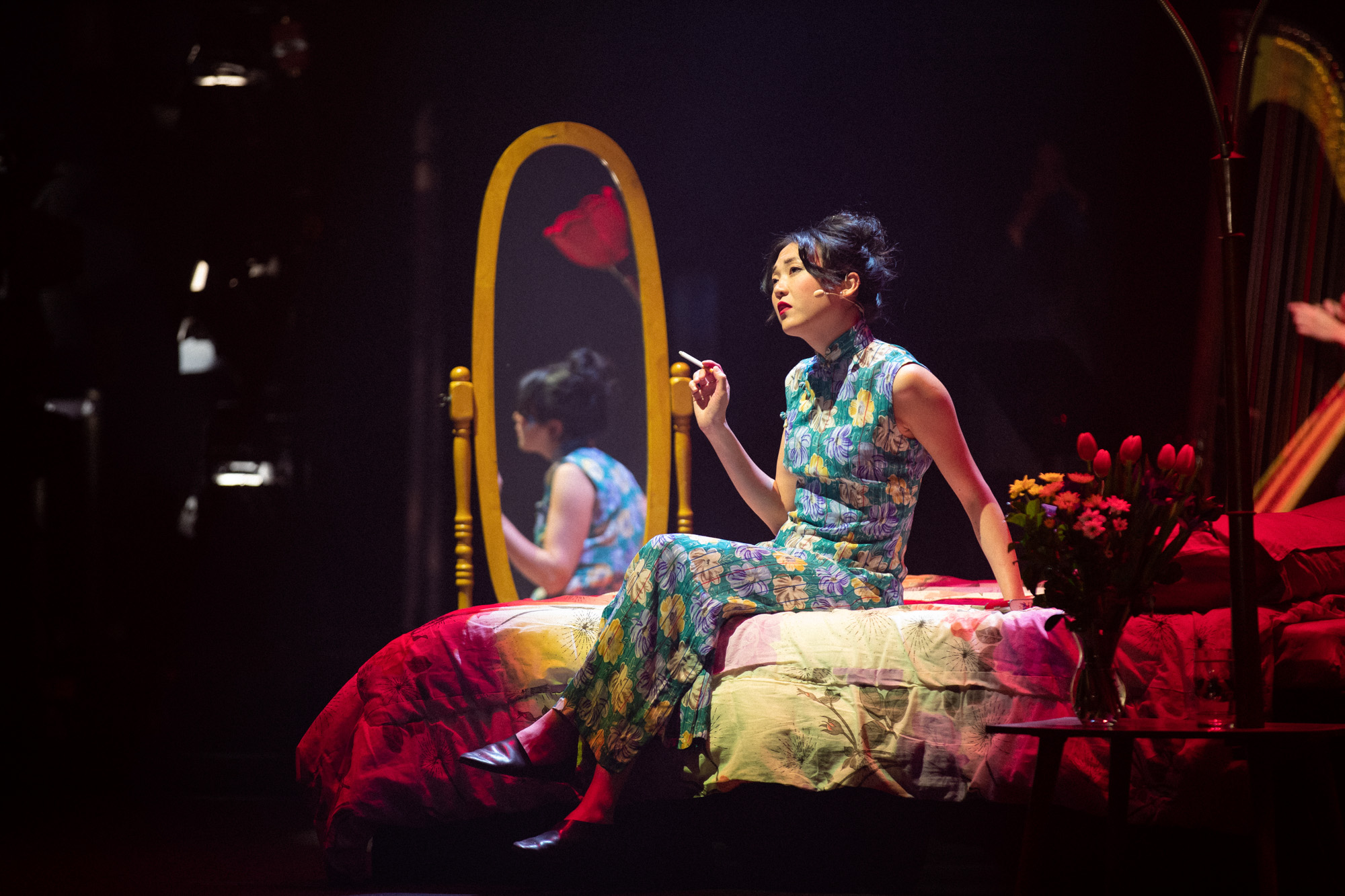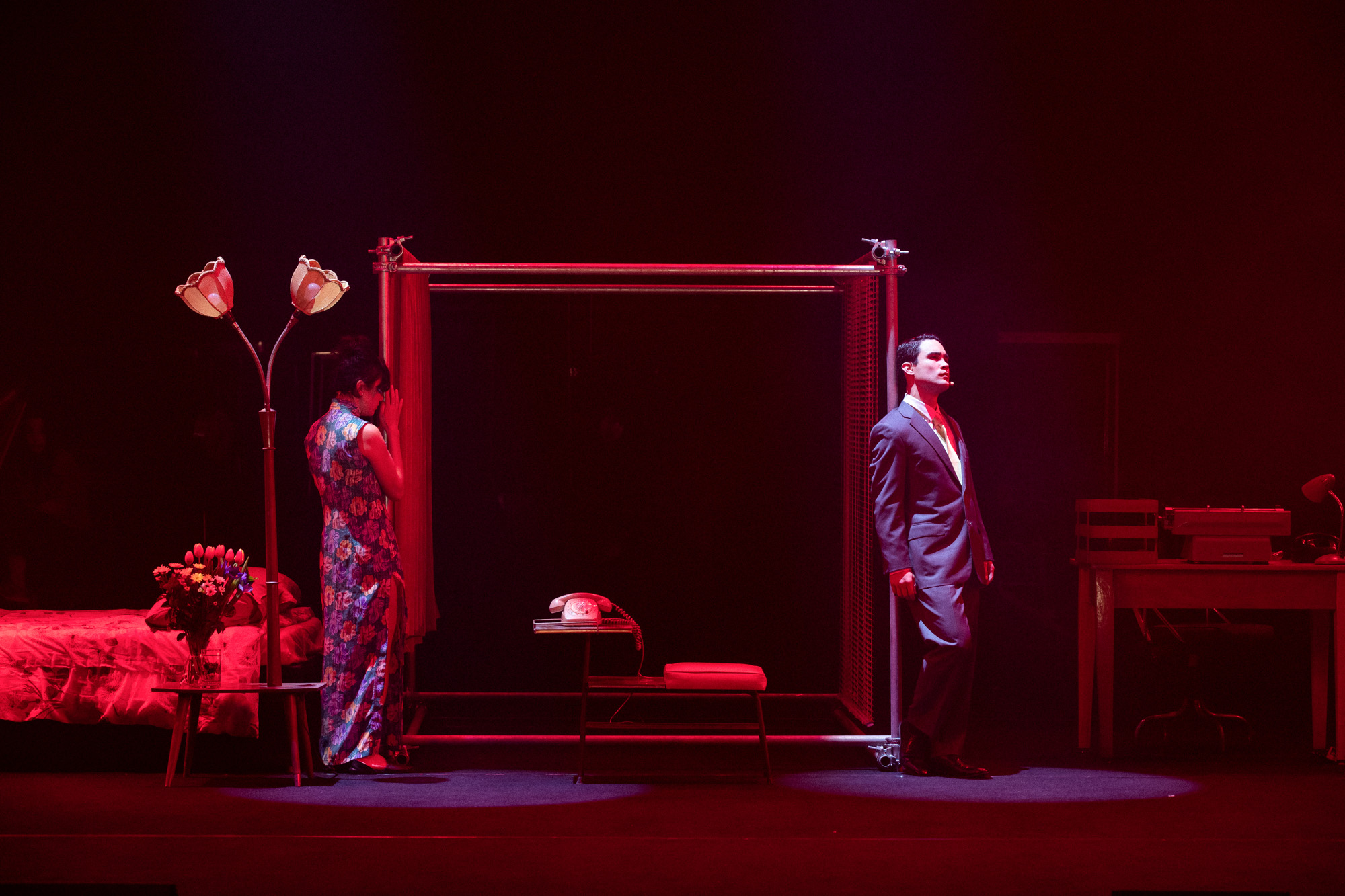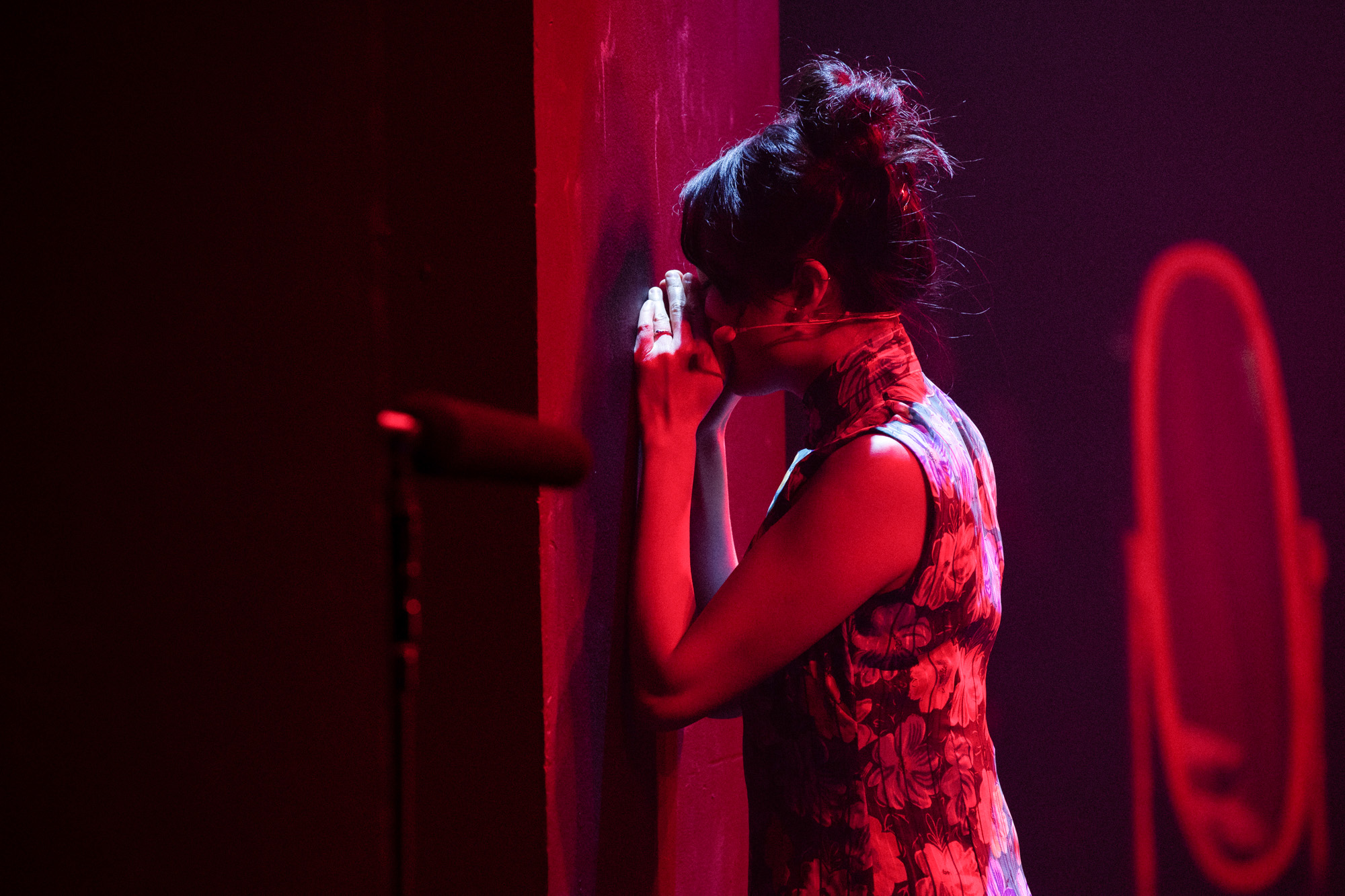In the Mood – A Love Letter to Wong Kar-Wai and Hong Kong
By Johanna Bear

Photo documentation of _In the Mood

Nominated for a Palme d’Or when it premiered at the Cannes Film Festival in 2000, Hong Kong filmmaker Wong Kar-wai’s In the Mood for Love portrays an unfurling romance between two lonely neighbors whose respective partners are having an affair. Celebrating the 20th anniversary of the film’s release, Chinese-Australian artists Rainbow Chan, Marcus Whale, and Eugene Choi collaborated on In the Mood –A Love Letter to Wong Kar-wai and Hong Kong, a live-streamed performance commissioned by the Sydney Opera House comprising musical vignettes that reimagine elements of the iconic movie through original music, theater, choreography, and spoken word.
Chan portrays Maggie Cheung’s Su Li-zhen, resplendent in a floral cheongsam, red lips, and feminine updo, while Whale plays Tony Leung’s smart-suited and stoic Chow Mo-wan. In between scenes Choi delivers melancholic narration of the characters’ imagined internal worlds, mostly hovering offstage as an omnipresent specter. The lyrics and dialogue, presented in English, Cantonese, and Mandarin, are subtitled in vintage yellow typeface recalling the film’s setting in 1960s Hong Kong.
Like Wong’s film, a painterly palette of deep reds, blues, and purples drench the set and costumes. Steeped in vermillion light, a minimally furnished bedroom, café interior, and replica of Chow’s office allude to key scenes. A scaffold sculpture by Choi introduces an idiosyncratic touch, cleaving the set and recalling both Hong Kong’s architecture and Wong’s use of frames within frames. Chan and Whale move between these spheres, haunting but never cohabiting them, echoing the film’s theme of missed connections. Interspersed shots of a clock—a prominent motif in Wong’s films—mark hurried skips through time and reify the current pandemic’s disorienting temporality.

Photo documentation of
Fantasy entangles with reality throughout. Chan and Whale—friends and previous collaborators—lament their own experiences of loss and heartbreak in original songs interwoven among contemporary reimaginings of Wong’s work. The artists’ possessions and family heirlooms also dot the set and costuming to add another layer of personal sentimentality. Meanwhile real-world impacts of Covid-19 are rendered visible, informing the performers’ spatiality and interactions: the performers remain at least a government-mandated 1.5 meters apart and face the empty theater instead of one another. At times dual cameras exaggerate the void between the leads, intensifying their longing. Although mediated by the camera and the audience’s viewing devices, close-up shots of their facial expressions create an intimacy that cannot be replicated in a live performance. This unique relationship between audience and performer embodies the disconnected desire so integral to Wong’s tale, which has become particularly relevant during this time of separation from loved ones, fear of touch, and yearning for ancestral homelands.
Yet moments of warmth and optimism still puncture the quiet despondence. In a scene functioning as both a playful interlude and a wink to Wong enthusiasts, all three collaborators take the stage for a bossa nova dance referencing a deleted scene from the film. Inhabiting the same plane for this segment alone, the performers enjoy a synchronicity of spirit through choreography.
In another scene refracting Su and Chow’s rain-soaked lament of their partners’ infidelity and their own unresolved feelings for one another, the leads sing a duet while walking in unison under a superimposed computer-generated downpour. Here, Chan and Whale embrace via song rather than physical touch as they mourn romantic, familial, and cultural separation. Rather than conscience and mid-century mores, it is the real-world threat of infection that prevents the pair from getting too close.
As the performance reaches its close, Chan and Whale recreate the film’s final scene. A split screen catches them, backs turned, whispering into walls on opposite sides of the stage. Choi then delivers her final incantation: “The past is something they could see, but not touch. And everything they see is blurred and indistinct.” The utterance speaks as much to the uncertainty of the pandemic and recent social unrest in Hong Kong as to the touchstone themes of Wong’s cinematic universe.
Shaped by personal and socio-political narratives, In the Mood functions as a time capsule for the present while exploring new possibilities for performative works. It is also a reminder to enact love, no matter the circumstance. “The practice of love offers no place of safety,” writes feminist author and activist bell hooks. “We risk loss, hurt, pain. We risk being acted upon by forces outside our control.” It is through this tumult that In the Mood invites us to meet crises with agility, suffering with tenderness, and heartache with love.

Photo documentation of _In the Mood
In the Mood – A Love Letter to Wong Kar-Wai and Hong Kong at the Sydney Opera House is streaming online.
To read more of ArtAsiaPacific’s articles, visit our Digital Library.









